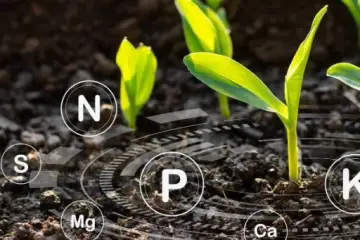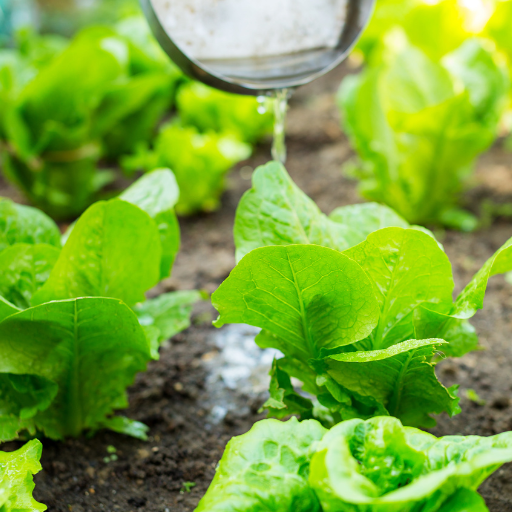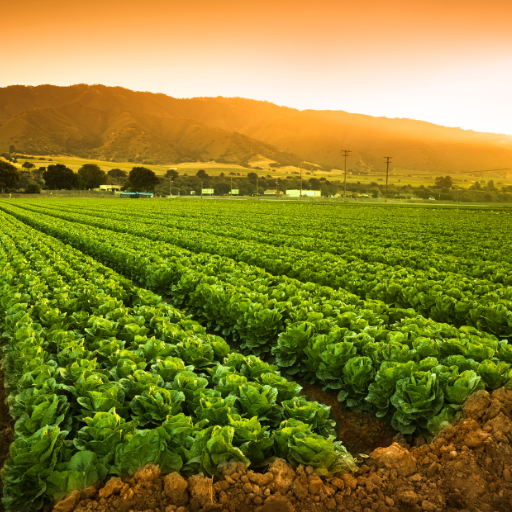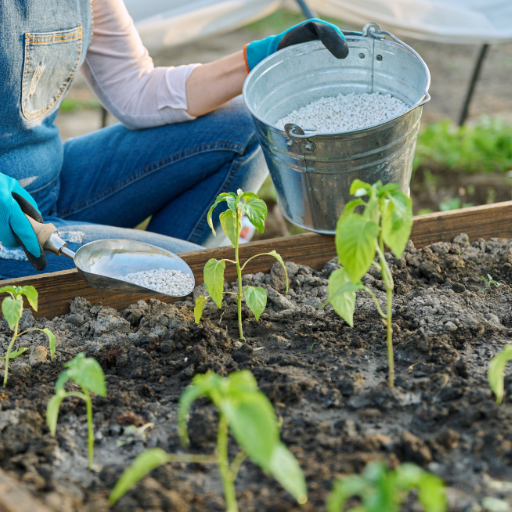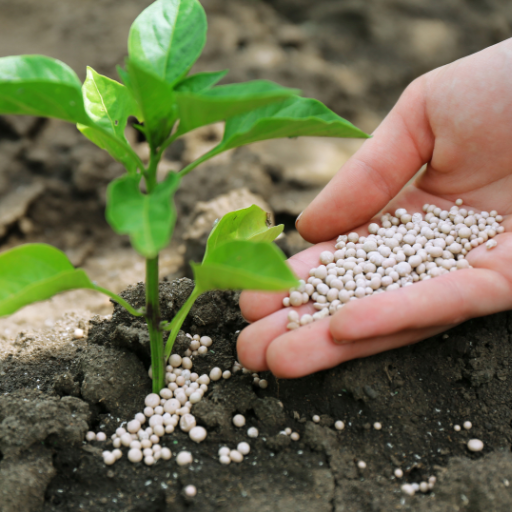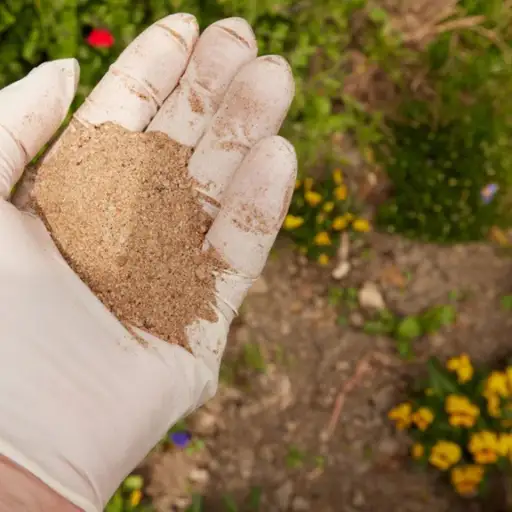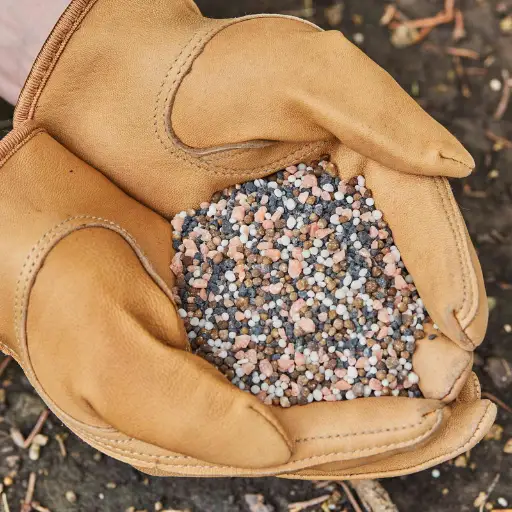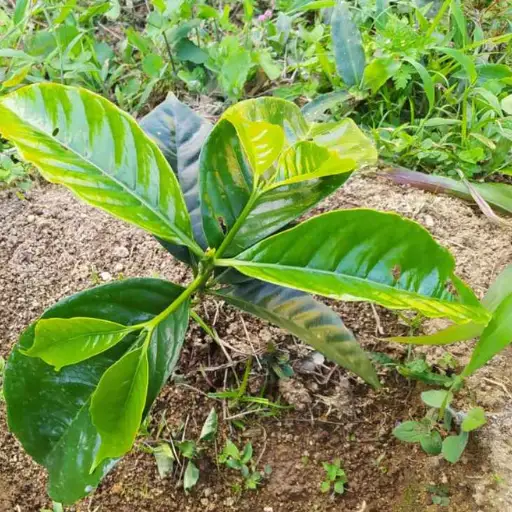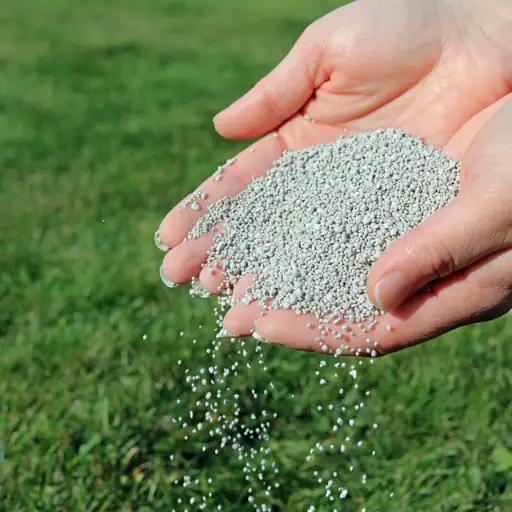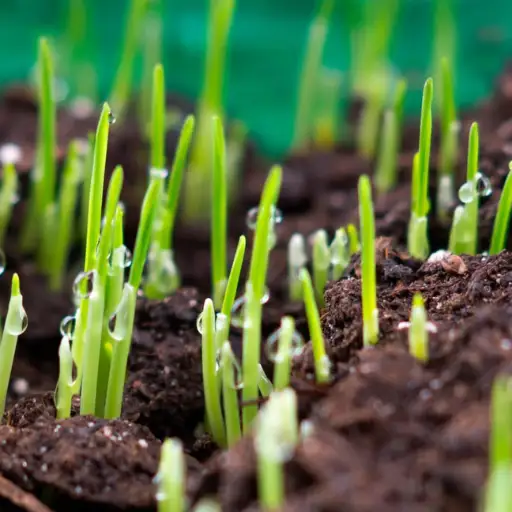The selection of the best fertilizer for vegetable garden involves an insight into some facts that influence plant growth and soil health. This guide is meant to enhance farmers’ knowledge about fertilizing their gardens by looking at various types of fertilizers, their nutrient composition, and how they contribute towards encouraging strong plant development. Moreover it explains how critical soil testing has become in establishing nutrient deficiencies and pinpointing specific needs for different vegetables. The article also covers both organic and synthetic options for fertilization whereby it provides a comprehensive evaluation on advantages and likely disadvantages so that readers can make decisions corresponding to their gardening objectives and environmental values.
Which Nutrients Do Vegetable Plants Need the Most?
Nutrients that are essential for the growth of vegetable plants include three macronutrients: Nitrogen (N), Phosphorus (P) and Potassium (K). Nitrogen is important for leaf and stem development which makes it imperative in leafy vegetables such as spinach, lettuce and others. It plays an important role in flowering and fruiting hence it is vital to plants like tomatoes, peppers etc. At large, this aids in enhancing the health of a plant as a whole; thus, there is better disease resistance besides specialized fruits or vegetables. Also, balanced plant nutrition and optimum growth require secondary nutrients such as calcium, magnesium, and sulfur, as well as trace elements like iron, manganese, and zinc, among others.
Nitrogen, Phosphorous and Potassium
This Research Proposal aims to explore nitrogen N , phosphorous P, and potassium K . In contrast to phosphorous or potassium deficiency symptoms of nitrogen can be observed over the entire plant because chlorophyll production occurs throughout all plant tissues. The recommended levels of nitrogen are 30-60 ppm depending on soil type which can be supplied by materials such as ammonium nitrate 34-0-0 or urea 46-0-0.
Phosphorus is necessary for root system development relying on energy transfers within plants mainly during early growth stages. Satisfactory concentrations should fall between 15 – 30 ppm. A common source this nutrient is superphosphate (0-20-0) or monoammonium phosphate (11-52-0).
Potassium facilitates enzyme activation, but there is some evidence that it also helps with disease resistance and nutrient transfer into cells from photosynthetic parts of plants, leading to enhanced fruit and vegetable quality. Normal soil levels range from 100–250 ppm potassium; hence, one would recommend applying potassium sulfate (0-0025) or potassium chloride(00 -000).
All these nutrients are based on soil testing results which must be used to address specific deficiencies and avoid over-fertilization leading to nutrient imbalances or environmental pollutions.
Why Micronutrients are Important for Vegetable Growth
By all means, macronutrients are foundational for plant health. However, even fewer micronutrients are as important as the others in this case, for a vegetable to grow healthy and well. These include iron (Fe), manganese (Mn), zinc (Zn), copper (Cu), boron (B), molybdenum (Mo) and chlorine (Cl) among others that perform specific roles in plant metabolic processes. Iron is an example; it is necessary for synthesizing chlorophyll and operating respiratory enzymes with optimal soil concentrations ranging from 2.5 to 4.5 ppm. Manganese is very crucial in photosynthesis and nitrogen assimilation hence should be present at concentration levels between 20-40 ppm.
Zinc, on the other hand, has recommended levels of 1-2 ppm because it is important in enzyme activation and protein synthesis while copper serves its purpose at approximately 0.1-0.5 ppm by influencing chlorophyll production and lignin synthesis thus improving the integrity of plants’ structures.Metabolic purposes include: cell wall formation and reproductive development that require boron which falls under 0.5 to 2ppm.Closely related with this are mo riles whose adequate quantities limit between 0.01 and 0.1 ppm.It however assists in nitrogen fixation as well as nitrate reduction especially by having molybdenum in as low amounts as those previously stated.Cl ions exist, which play a role in osmosis or maintain ion balance where the soil level needed does not exceed 100ppm.
This can eventually affect plant healthiness leading to reduced growth rate or/and productivity due to deficiencies caused by micro-nutrient deficiency symptoms detectable through visual observation on plants or tested on soils.Definitely; one must measure these micro-nutrients specifically before adjusting them.Most importantly, a balanced mixed that ensures strong and healthy vegetable crops.
Why Magnesium and Calcium Are Critical for Plants
Magnesium (Mg) and calcium (Ca) are critical plant growth and development macronutrients. They have unique roles within the physiology of plants. Within this context, magnesium is one of the essential photosynthetic chlorophyll molecule components. Further still, it is also involved in activating enzymes such as those that synthesize carbohydrates and protein. A soil’s ideal magnesium levels should range between 1 to 3% in order to ensure enough chlorophyll synthesis as well as vigorousness of the entire plant.
Calcium pectate that makes cell wall structure integral amounts to its significance; hence it enhances structural toughness and resistance against diseases-causing agents by being a part of the cell wall as calcium pectate. When in sufficient quantities, this element aids in the elongation of roots as well as shoots, among other biological processes. In most cases, the best possible level of calcium concentration should be at about 65-70% while maintaining 75% cation exchange capacity (CEC) for utmost structural support across all forms.
Soil testing will tell whether soil modification through supplying deficient nutrients back into soils is necessary.Proper management ensures that plants receive a balanced supply, facilitating robust and healthy vegetable crop production.
Balanced levels of magnesium and calcium are necessary to prevent deficiency symptoms such as interveinal chlorosis for magnesium and blossom-end rot in fruits for calcium. Likewise, taking into account these nutrient requirements helps us maintain a proper yield since comprehensive soil testing along with appropriate fertilization practices can help keep these nutrients within their optimal ranges, thereby ensuring maximum crop production.
What are the Different Types of Fertilizer for a Vegetable Garden?
Broadly, vegetable garden fertilizers are classified into three categories: organic, synthetic and slow-release. Organic fertilizers contribute to good soil structure and increase microorganisms’ activities, releasing nutrients gradually over a long period of time – for example, as compost, manure, bone meal, or fish emulsion. Immediate nutrient availability is promoted by synthetic fertilizers like N-P-K balanced formulations that cater for rapid plant growth and development. Slow-release fertilizers contain coated granules or organic mixtures which are used to reduce frequency of application and leaching problems in the product. There are unique advantages to each type of fertilizer depending on the specific needs of the vegetable garden, soil condition as well as preference from the gardener.
Organic versus Synthetic Fertilizer
To select between organic and synthetic fertilizers we should consider their relative benefits and technical specifications.
They derive from various natural materials including compost, manure, bone meal, fish emulsion etc. These types of additives enhance soil formation, water retention improve living conditions for beneficial bacteria. The rate at which nutrients are released from these substances is slow hence reducing nutrient leaching coupled with minimizing risks associated with excess application of fertilizers. On average, these options have lower nutrient levels (usually 1-6% nitrogen (N), 0.5-2% phosphorus (P), 0.5-6% potassium (K)).
Synthetic fertilizers grow rapidly due to their composition based on industrial chemicals making nutrients readily available to plants immediately after usage. Most often than not these types of products have higher nutrient content Per se higher percentages of nitrogen (N) 10-20%, phosphorous (P) 5-10% and potassium (K) around 5-20%. However, such quick release can result in potential loss through leaching especially when they are applied on sandy soils receiving heavy rainfall.
When choosing between organic and synthetic fertilizers, one should consider the demands of their vegetable garden. Organic fertilizers are better in terms of developing sustainability and long-term soil health, but due to their low nutrient concentration, these types may require more frequent application. Synthetic fertilizers boost nutrients quickly but may cause pollution if improperly handled. In general, using a combination of both types depending on the need could be the best approach when managing the vegetable garden.
All-Purpose vs. Specialty Fertilizers
An all-purpose fertilizer is designed to include a mix of necessary elements that are acceptable to a wide range of plants and growing conditions. They usually have an equal ratio of nitrogen, phosphorus, and potassium (10-10-10 or 14-14-14) which helps to keep the plants’ roots healthy, produce large leaves as well as flowers with bright colors. Thus, it can be used in any type of garden setting.
Contrariwise, specialty fertilizers are specifically made for certain types of plants or growth stages. For instance, “bloom boosters” like a 5-30-5 formulation concentrate on high phosphorus content to stimulate flowering and fruit production. Additionally, “lawn fertilizers” may have more nitrogen content such as 20-5-10 to encourage a thick lawn.
Consider the plant’s unique needs and growth characteristics to ensure optimal application. Specialized nutrient profile compositions found in specialized fertilizers may address not only specific deficiencies or growth goals better but also require exacting management practices to avoid nutrient imbalances. The percentage values of macronutrients written on product labels (N-P-K values), together with micronutrient contents like calcium, magnesium, sulphur should be carefully considered when determining whether to use general purpose or specialty fertilisers.
Granular vs. Liquid Fertilizer
Granular fertilizers come in solid form that is dry and designed for slow release of nutrients into the soil over time. These fertilizers contain higher concentration levels and are normally applied directly onto the soil surface or mixed into the soil itself depending on how one wants it applied Granular forms provide continual nutrient sources for long periods; hence there is limited need for repeat usage offering precise control over dosing rates relative to nutrient availability at any given time Technical parameters typically mentioned on containers include macronutrient percentages (N-P-K ratio) and solubility rate, which determines the duration for nutrients to be available to the plants.
On the other hand, liquid fertilizers are soluble in water, or they may come in a form that has been prepared for use. When applied on plants, these fertilizers get absorbed quickly into them hence making the nutrients immediately available. This quick absorption is particularly useful when it comes to correcting nutrient deficiencies or promoting rapid growth during critical stages. Liquid fertilizers are also effective in foliar feeding where nutrients bypass any issues with nutrient uptake by soil through direct leaf application. Consequently, important technical parameters for liquid fertilisers include concentration of soluble nutrients (often given as parts per million; ppm), pH level, and directions on dilution rates so as not to over-fertilize or damage plants.
In conclusion, granular versus liquid fertilizer choices should be guided by plant growth requirements, required delivery speed of nutrients into plants’ systems and gardeners’ management preferences. They are very handy for supplying long-term nutrition and user-friendliness while at the same time providing quick nutrient supply needed for immediate plant response in case of liquid forms of fertilizer.
What Is the Best Fertilizer for Vegetable Gardens?
The type of vegetable plants grown and the nature of the soils will greatly influence the choice of an ideal vegetable garden fertilizer. Any vegetable garden is advised to go for a balanced fertilizer with equal ratios of nitrogen (N), phosphorus (P) and potassium (K) such as 10-10-10 mix formula. It is recommended because it helps in maintaining good health of a plant hence encouraging growth rate, strong root system, and abundant yield.
On the other hand, organically composted manure and well-rotted compost are alternatives that can be used by those practicing organic gardening since they improve soil structure and fertility and enrich them with essential nutrients. Furthermore, slow-release fertilizers like fish emulsion, seaweed extract, or bone meal may help provide a continuous supply of nutrients for growth over time.
Individual requirements may also necessitate specific types of fertilizers. For example leafy vegetables may need more nitrogen which promotes foliage production while others like root ones require higher levels of phosphorous to enhance root development. This information can be better gained by conducting a soil test so that nutrient correction can be done accordingly based on unique conditions within the garden.
Top Recommendations for Organic Fertilizers
- Jobe’s Organics All Purpose Granular Fertilizer (4-4-4)
- Some people may choose to use Jobe’s Organics All Purpose Granular Fertilizer, which is well-balanced and easy-to-use for different vegetable gardens. The 4-4-4 NPK ratio helps achieve a good balance of all essential nutrients: nitrogen needed for leafy growth, phosphorous required for root formation whereas potassium is used for the overall health of the plant. Additionally, this product has Jobe’s Biozome formula that contains living microorganisms such as mycorrhizal fungi and archaea which improve soil conditions and help plants to grow better. In its granulated form, it releases nutrient substances slowly over a long period of time thereby lessening the possibility of leaching out nutrients.
- Dr. Earth Home Grown Organic Tomato, Vegetable & Herb Fertilizer (4-6-3)
- Dr. Earth Home Grown Organic Fertilizer is not just made for any plant, but specifically formulated for tomatoes, vegetables, and herbs. This means that it contains a higher Phosphorous content because the N-P-K ratio is 4-6-3 which supports bloom and root development. The special blend of this fertilizer is TruBiotic enriched with a variety of probiotics as well as mycorrhiza to enhance nutrient uptake and promote soil fertility. Also, fish bone meal and alfalfa meal and kelp meal are added in this fertilizer to supply several micronutrients. It can be applied once or twice in the growing season since its granular form ensures uniform distribution and slow release of nutrients essential for nourishing crops throughout the year.
- Espoma Garden-Tone (3-4-4)
- Espoma Garden-Tone is an organic fertilizer for vegetable gardens whose NPK ratio stands at 3-4-4, which makes it balanced. In addition to the essential nutrients the product supplies, it also contains many natural substances such as feather meal, poultry manure, bone meal, alfalfa meal and greensand that can enhance soil structure and microbial population. Espoma’s proprietary blend of beneficial microbes found in Garden-Tone, known as Bio-tone, boosts nutrient availability and enables strong root systems to develop. The slow-release feature of this product ensures plants will be provided with a continuous supply of nutrients thus avoiding over-fertilization while promoting consistent growth.
Each of these organic fertilizers is designed to meet the specific needs of vegetable gardens, ensuring optimal growth and productivity through the intelligent use of natural, nutrient-rich components.
Highly Rated Synthetic Fertilizers for Vegetables
Miracle-Gro Water Soluble Tomato Plant Food is one of the best synthetic fertilizers for vegetable gardens with one of the highest ratings. A NPK ratio of 18-18-21 makes it a high-phosphorus and high-potassium formula that ensures strong roots and abundant fruits. This fertilizer can be easily dissolved in water for fast absorption by plants. It is a blend of all the technical parameters required for tomatoes and other fruit-bearing vegetables.
Jobe’s Organics All Purpose Fertilizer Spikes comes next among the first contenders, and at least it bears the name organic while this does not mean that its mixture fails to support healthy growth of plants. The nutrient content is well-balanced with an NPK ratio of 4-4-4. Such spikes are pre-determined to ensure steady feeding directly to plant roots thus minimizing chances of nutrients wastage through leaching.
Another option, Osmocote Smart-Release Plant Food Flower & Vegetable, offers a balanced formula with an NPK ratio of 14-14-14, which caters to all stages from root establishment to flowering and fruiting in plants. Its smart-release technology enables constant feeding throughout four months, making it highly effective and reducing instances when frequent application must be done again. The encapsulated nutrients are released according to soil temperature thereby ensuring maximum nutrient uptake by actively growing plants only.
Pros and Cons of All-Purpose Fertilizers
All-purpose fertilizers offer a range of advantages and disadvantages, which can influence their suitability for different gardening needs.
Pros:
- Versatility: All-purpose fertilizers, with balanced NPK ratios such as 10-10-10 or 12-12-12, can be used for a variety of plants, making them convenient for gardeners with diverse crops. This versatility reduces the need to purchase multiple specialized fertilizers.
- Ease of Use: These fertilizers often come in easy-to-apply forms such as granules, spikes, or water-soluble powders, simplifying the application process. Pre-measured spikes, for example, provide consistent feeding and minimize the risk of over-fertilization.
- Balanced Nutrition: The balanced nutrient composition supports overall plant health by providing essential macronutrients in equal proportions. This balanced nutrition is crucial for plants requiring uniform growth, such as many vegetables and ornamentals.
Cons:
- Lack of Customization: While suitable for general use, all-purpose fertilizers may not meet the specific nutritional requirements of certain plants. For instance, plants like tomatoes or flowering vegetables might benefit more from fertilizers with higher phosphorous content (e.g., NPK 18-18-21).
- Potential for Nutrient Imbalance: Over time, continuous use of an all-purpose fertilizer can lead to an imbalance in soil nutrients, particularly if the soil already has adequate levels of one or more of the nutrients provided. This can inhibit plant health and growth.
- Environmental Impact: Excessive use or improper application of these fertilizers can result in nutrient runoff, leading to environmental issues such as waterway eutrophication. If not properly managed, the balanced nutrients in these fertilizers can contribute to leaching and pollution.
When choosing an all-purpose fertilizer, it’s important to consider the specific needs of your plants and soil conditions, as well as the environmental implications of your gardening practices.
How Do You Apply Fertilizer to a Vegetable Garden?
Applying fertilizer to a vegetable garden is a process that contains several steps such that the nutrients can be absorbed by the plants effectively. To start with, carry out a soil test so as to determine its content of nutrients and pH level. By this means you will know which type and how much fertilizer should use. The most favorable time to fertilize is typically in the spring before planting and during growing season. For pre-planting application, spread even amounts of fertilizer throughout the soil surface, incorporating it into the top 6-8 inches using a hoe or tiller. On established plants apply it as a side dressing: place it in a shallow trench 6-8 inches from plant stems and then cover with soil and water thoroughly. Also consider liquid fertilizers that boost nutrient uptake immediately following their manufacturer’s instructions for dilution and application rates. Monitor your plants regularly adjusting your fertilization accordingly depending on the growth and health of your plants
Tips for Applying Fertilizer at Different Growth Stages
Seedling Stage: Plants can be very fragile in the seedling stage, and it is vital to manage nutrients with precision. A blended water-soluble fertilizer with ingredients such as 10-10-10 or 20-20-20 would work well. However, to prevent the young roots from burning on application, you should dilute the fertilizer to half the recommended strength before applying it every 7-14 days.
Vegetative Stage: Plants require more nitrogen during vegetative growth, when leaves and stems are produced. The right blend would have more nitrogen, like 16-8-4. When using a foliar spray or side dressing as an application, ensure that it does not contact plant leaves and is uniformly spread.
Flowering and Fruiting Stage: At this point, plants divert their energy towards flowers and fruits thus demanding for more phosphorus and potassium. Alternatively, there can be fertilizers with formulas such as 5-10-10 or 4-8-4 for your use too in this case. On the other hand, one can also apply fertilizer to base area of plants in circle shape or use drip irrigation system where nutrients are delivered evenly through it. Observe crop performance then adjust the quantity each time while ensuring constant soil moisture for improved nutrient uptake.
For optimal plant health, including yield optimization, always follow the manufacturer’s instructions on application rates and methods, alongside routine monitoring of soil acidity levels and nutrient concentrations at all times.
How to Conduct a Soil Test to Determine Nutrient Needs
For you to establish the nutrient requirements of your soil through a soil test, follow these steps: First take samples from different regions in your garden. For this, employ a clean trowel or spade and collect top 4-6 inches of soil. Mix these samples so that they can be indicative of the general sample. Now put it on a clean surface until the soil dry naturally. When dried, put approximately one cup of mixed soils into either a kit for testing soil or send it to a lab specialized in testing soils. Make sure you have followed the packaging and shipping instructions given by the test kit or laboratory respectively. The results will tell you about pH values and nutrient composition including nitrogen, phosphorus and potassium levels in the soil. This information will enable you to adjust your fertilization practice well enough to meet specific nutrient needs of your crops.
Best Practices for Using Fertilizer in a Home Garden
To ensure optimum plant growth and health when using fertilizer in a home garden, several best practices must be observed. First and foremost, it is very important to choose the right kind of fertilizer which should include both organic and inorganic types. Organic fertilizers derived from natural sources are good at improving soil structure as well as providing nutrients that get released slowly into plants’ root systems while inorganic ones provide exact nutrient mixtures that are readily available upon application such as 20-10-10 (N-P-K). A balanced fertilizer like 10-10-10 is recommended for vegetable gardens because it contains equal amounts of NPK which are essential elements.
Timing is another key consideration when applying fertilizers especially during particular growth periods since some products work better than others at certain stages of development. While high nitrogen fertilizers would be appropriate during the leafy growth stage, phosphorous-rich ones encourage root development & flowering primarily. Always read the manufacturer’s specifications regarding how much product should be applied; otherwise, cases of over-fertilizing may occur, leading to nutrient runoff, which can deprive plants of nutrients.
Proper distribution of fertilizer is also important. Granular fertilizers are sprinkled evenly over the soil surface and then lightly incorporated into the top layer while liquid fertilizers may be applied with a watering can, hose end sprayer or drip irrigation system ensuring an even delivery of nutrients to the root zone. Nutrient absorption will be facilitated by maintaining constant moisture levels in the soils hence it is recommended that watering should follow immediately after application.
Moreover, it is crucial to practice soil pH monitoring since some elements become unavailable for plants if the pH is too low/high. The best garden plants grow well in slightly acidic to neutral conditions (pH 6-7). Regular testing of soils as mentioned earlier can show if there are any adjustments needed to maintain an optimal pH level. Lime should be applied in case soil pH need rise while sulfur must be applied when its acidity has increased significantly as indicated by the test results.
Finally, using slow-release fertilizers or incorporating compost are some of sustainable fertilization that could improve longer-term fertility and health of soils with less environmental impact. With these best practices, gardeners will have strong and high yielding crops on their farms.
When Is the Best Time to Fertilize Vegetables?
The perfect time to fertilize vegetables really depends on the vegetable type and its growth phase. In general, it is preferable to apply fertilizer in the early morning or late afternoon, thus preventing burning of fertilizer by scorching sun at midday. For most vegetables, a balanced fertilizer should be applied at planting time for early growth support. During leafy growth period, change to nitrogenous fertilizers as the plants grow. Fruiting vegetables like tomatoes, peppers, and cucumbers, however, require additional phosphorus and potassium during flowering and fruiting stages. For best results, strictly adhere to particular vegetable types’ recommendations for each stage of growth.
Frequency of Fertilizer Application within the Growing Season
The number of times one applies fertilizer throughout the growing season depends on the kind employed and the plant’s specific requirements. Slow-release organic fertilizers are often required once during onset followed by 4-6 week intervals thereafter.Synthetic ones that discharge nutrients more quickly may necessitate frequent applications, mostly every 2-4 weeks.
In most cases people recommend that for garden veggies you may need to put on balanced food every three or four weeks only when they are in their growing seasons .However, heavy feeders such as tomatoes, eggplants, and corn require much often feeding approximately after two or three . This can easily be done by checking the soil using soil tests so as not to over-fertilize which would destroy plants and pollute environment .
Application rates will usually follow manufacturer’s instructions with general guidelines recommending about one to two pounds of 10-10-10 fertilizer per hundred square feet of gardening space. Soil test results and individual plant needs may require adjustments though. After application, moisten the ground before tillage in order to dissolve all nutrients needed by crops
Seasonal Tips for Fertilizing Your Garden
Before planting in early spring, prepare the garden bed by mixing it with compost or balanced organic fertilizer to improve the soil. This will provide a good ground for growing later. When these seedlings come out and start growing, use organic granular fertilizers that are well balanced according to manufacturer guidelines periodically after every 4-6 weeks. In case of summer, apply side-dressings using potassium-rich fertilisers to support fruiting and flowering especially in tomatoes and peppers. As fall approaches, change to a low nitrogen high phosphorous fertilizer that promotes root establishment and prepares perennial plants for winter. Adjust your fertilization at all times based on soil test results to prevent nutrient imbalances.
How Do You Fertilize Vegetables for Maximum Yield?
Vegetable fertilizing requires an all-rounded approach that is based on plant needs and growth stages to maximize yields. Start by doing a soil test for nutrient profile and pH, then do the available amendments which corrects or address the deficiencies and imbalances. In order to ascertain that the fertilizer has a full spectrum of nutrients, use a balanced and complete fertilizer. Incorporate slow release granular fertilizer into the soil during initial planting stage. As plants grow, supplement with liquid fertilizers every 2-4 weeks, concentrating on vital nutrients such as potassium for flowering plants and fruiting ones, as well as nitrogen for leafy vegetables. Moreover, organic matter such as compost or manure can also be utilized to enhance fertility of soil and structure leading to better absorption of nutrients by roots and growth thereof. Additionally, mulching helps in moisture conservation and reduces weed competition, hence optimizing nutrient utilization. Always follow the recommended application rates and schedules for each type of fertilizer to avoid the pitfalls of over-fertilization.
Step-by-Step Guide for Fertilizing Your Vegetable Plants
- Conduct a Soil Test: Begin by performing a soil test to determine the pH levels and nutrient content of your soil. This will inform you of any deficiencies that need to be corrected for optimal plant growth.
- Prepare the Soil: Work organic matter such as compost or well-rotted manure into the soil before planting. This not only enriches the nutrient content but also improves soil structure and moisture retention.
- First Application of Fertilizer: Apply a balanced, slow-release granular fertilizer at the time of planting. This should be incorporated into the soil around the planting area to provide a steady nutrient supply as the plants establish themselves.
- Mid-Season Fertilization: Supplement with a liquid fertilizer approximately 4-6 weeks after planting. Use a formulation high in nitrogen for leafy vegetables and one rich in potassium for flowering and fruiting plants. Apply this solution every 2-4 weeks through the growing season.
- Monitor and Adjust: Continuously monitor the health and growth of your plants. Adopt additional fertilization practices based on visual cues and further soil testing as needed. Adjust the nutrient composition to address specific growth stages and plant needs.
- Use Mulch: Apply a layer of mulch around your plants to conserve soil moisture, suppress weeds, and improve nutrient uptake. Organic mulches can also decompose over time, adding additional nutrients to the soil.
- Final Fertilization: As the growing season comes to an end, especially for perennials, apply a low-nitrogen, high-phosphorus fertilizer to encourage root development and prepare the plants for the upcoming winter.
Following these steps ensures that your vegetable plants receive all the necessary nutrients efficiently, leading to maximum yield and healthy growth.
Common Fertilizer Mistakes and How to Avoid Them
The most common mistake gardeners make is over-fertilizing. Where the plant’s foliage turns brown and crispy, too much fertilizer can cause nutrient burn. To avoid this, always follow the manufacturer’s recommendations and know how different plants respond to different types and amounts of fertilizers.
Another frequent problem is under-fertilizing, which often results in stunted growth and poor yields. Regular soil testing can determine the specific nutrient requirements for avoiding deficiencies. Based on the growth stages and feedback from these tests, adjust the fertilization schedule.
Also, incorrect application timing could significantly impact plant health. Fertilizing at the wrong time, such as during dormancy or extreme weather conditions, only wastes resources and harms the plants. Apply fertilizers during active growing seasons, coinciding with your plant’s specific needs, for maximum absorption and benefit.
Your gardening efforts will be greatly improved when you know what they are.
Organic Matter in Vegetable Production
Soil structure improvement enhances root penetration and aeration while increasing water retention maintains constant moisture levels that support healthy plant growth (Eghball et al., 2002). Decomposed organic matter consist of composts, manures, cover crops amongst other things (Wilhelm et al., 2016). This assists in breaking down organic materials into nutrients that can be taken up by plants hence fostering a thriving microbial community (Ameloot et al., 2015). Organic materials should regularly be incorporated into gardens, resulting in vibrant plant health as well as higher yields, making vegetable production more sustainable (Monecke et al., 2013).
Frequently Asked Questions (FAQs)
Q: What is the best fertilizer for a vegetable garden?
A: The best fertilizer for a vegetable garden depends on your specific plants’ needs. A balanced 10-10-10 fertilizer provides equal parts nitrogen, phosphorus, and potassium, making it a versatile choice for most vegetable crops. However, you may also consider organic options like compost, manure, and bone meal for additional nutrients.
Q: How often should vegetable fertilizer be applied?
A: Fertilizer application frequency depends on the type of fertilizer used and the specific needs of your vegetable plants. Typically, a slow-release granular fertilizer may be applied once or twice a season, while liquid or soluble fertilizers may need to be applied every 2-4 weeks.
Q: Are organic fertilizers better than inorganic fertilizers for vegetables?
A: Organic fertilizers, such as compost and manure, improve soil health and provide a slow, steady release of nutrients to plants. Inorganic fertilizers, like 10-10-10, provide immediate nutrients to plants but do not improve soil structure. Both types have their benefits, and a gardener may choose to use a combination of both to achieve the best results.
Q: What nutrients do vegetables need from fertilizers?
A: Vegetables primarily need nitrogen, phosphorus, and potassium from fertilizers, which are often referred to as N-P-K. Additionally, other nutrients like calcium, magnesium, and trace minerals play essential roles in helping plants grow and produce healthy yields.
Q: Can I use compost as the only fertilizer for my vegetable garden?
A: While compost is an excellent source of nutrients and improves garden soil health, it may not provide all the nutrients your vegetable crops need. Incorporating additional fertilizers like bone meal or blood meal can help ensure your plants receive a balanced diet of nutrients.
Q: What is the advantage of using fish emulsion as a fertilizer?
A: Fish emulsion is an organic liquid fertilizer that provides a quick boost of nutrients to plants. It is rich in nitrogen, which supports leafy growth, and contains other essential nutrients that promote overall plant health. It is particularly beneficial during the early growth stages of vegetables.
Q: How do I know how much fertilizer to use in my vegetable garden?
A: The amount of fertilizer to use depends on the type of fertilizer and the specific needs of your plants. Always follow the manufacturer’s guidelines for the particular fertilizer you are using. Conducting a soil test prior to planting can also help determine the nutrient levels in your garden soil and guide your fertilizer application.
Q: What are some common types of vegetable fertilizer available?
A: Common types of vegetable fertilizer include granular fertilizers, which are slow-release and typically applied once or twice a season, and liquid or soluble fertilizers, which are fast-acting and require more frequent application. Organic options include compost, manure, bone meal, blood meal, and cottonseed meal fertilizer. Each type has its advantages depending on your specific gardening needs.
Q: How does cottonseed meal fertilizer benefit vegetable plants?
A: Cottonseed meal fertilizer is a slow-release, organic nitrogen fertilizer that helps promote steady, sustained growth in vegetable plants over a long period. It is particularly beneficial for leafy greens and heavy-feeding vegetables, providing essential nutrients without the risk of burning plants.
Q: Can inorganic fertilizers, like 10-10-10, be used in a new garden?
A: Yes, inorganic fertilizers like 10-10-10 can be used in a new garden to provide an immediate supply of balanced nutrients to help plants establish and grow. However, combining them with organic materials, like compost, can improve soil structure and fertility over time, creating a healthier growing environment for your vegetables.


